Why does a Bronze Age hoard have a silvery 'glow'?
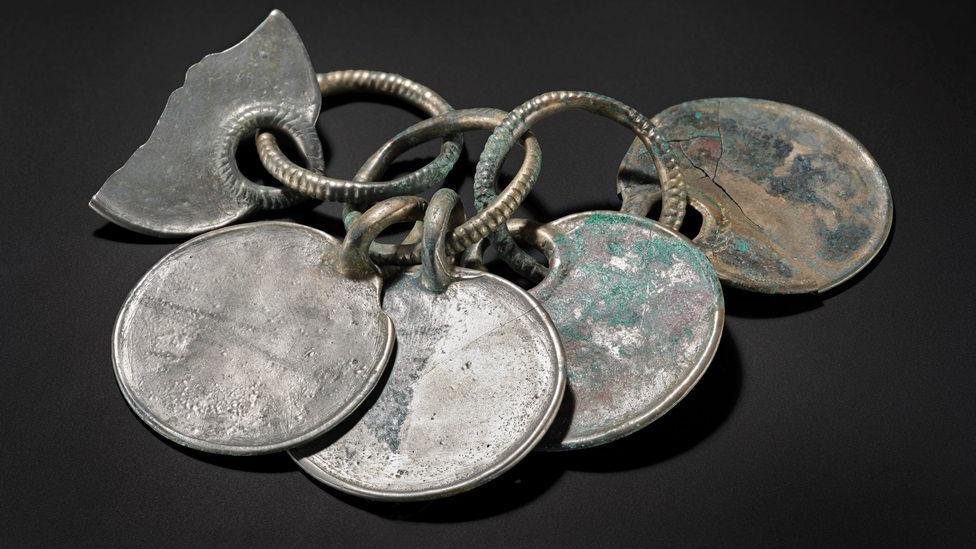
Initial conservation work has revealed the "exceptionally rare" silver-coloured objects
- Published
Initial conservation work has revealed "exceptionally rare" silver-coloured items in a hoard of Bronze Age artefacts unearthed by a metal detectorist in the Borders.
The Peebles Hoard, which had lain undisturbed for 3,000 years before it was discovered in 2020, was acquired by National Museums Scotland (NMS) last year.
It comprises more than 500 unusual bronze and organic objects and components, many "without archaeological parallel anywhere in the world".
NMS senior curator of prehistory Dr Matthew Knight said: "The Peebles Hoard is truly a one-of-a-kind discovery, and I have never seen anything like the stunning, silver-coloured finish of these Bronze Age objects. They almost glow."
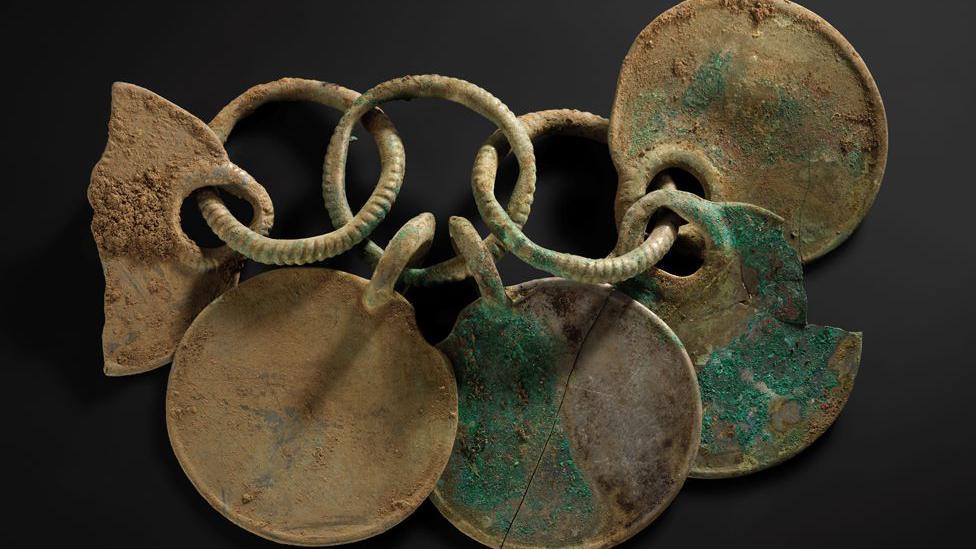
The true colour of many items was unclear prior to the conservation work
The hoard has been described as one of the most significant ever found in the country.
Dating from between 1,000 and 800BC, it was allocated to NMS under the Treasure Trove system, with a payment made to the detectorist Mariusz Stepien who found it.
NMS said the defining technological characteristic of the Bronze Age was the widespread use and production of bronze - an alloy of copper and tin that is usually a deep golden colour.
However, conservation of the Peebles Hoard has revealed rare silver-coloured objects from an era when silver was unknown.
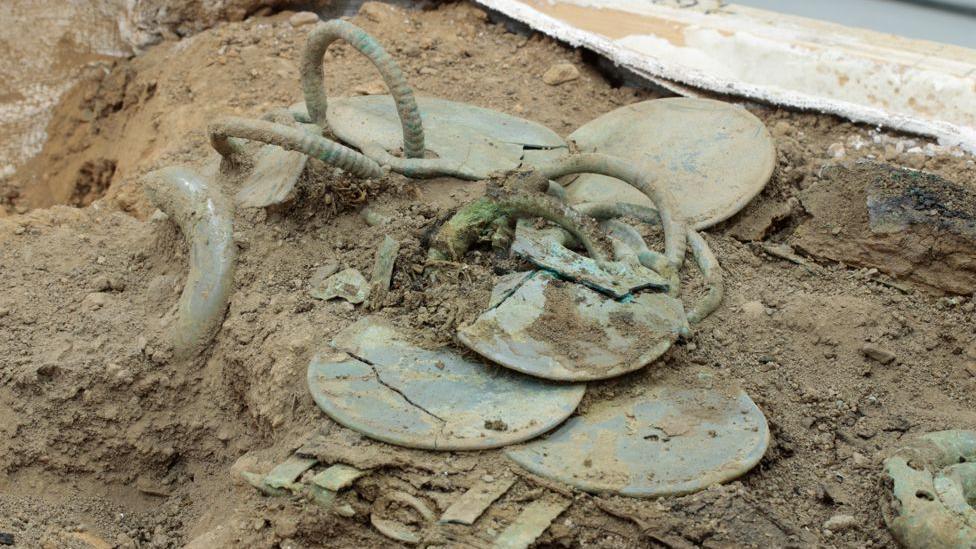
Hundreds of pieces were discovered by a metal detectorist in 2020
Analysis has revealed the colour is the result of high levels of tin on the surface.
This is thought to be the product of a deliberate enrichment technique by highly-skilled craftspeople.
The bronze objects emerged from the earth encrusted with earth and green copper patina - a film produced by oxidation
After months of careful preparatory work to stabilise, assess and document the material in the hoard, conservators are painstakingly removing thousands of years of dirt and corrosion to reveal the "spectacular lustre" of the original surface.
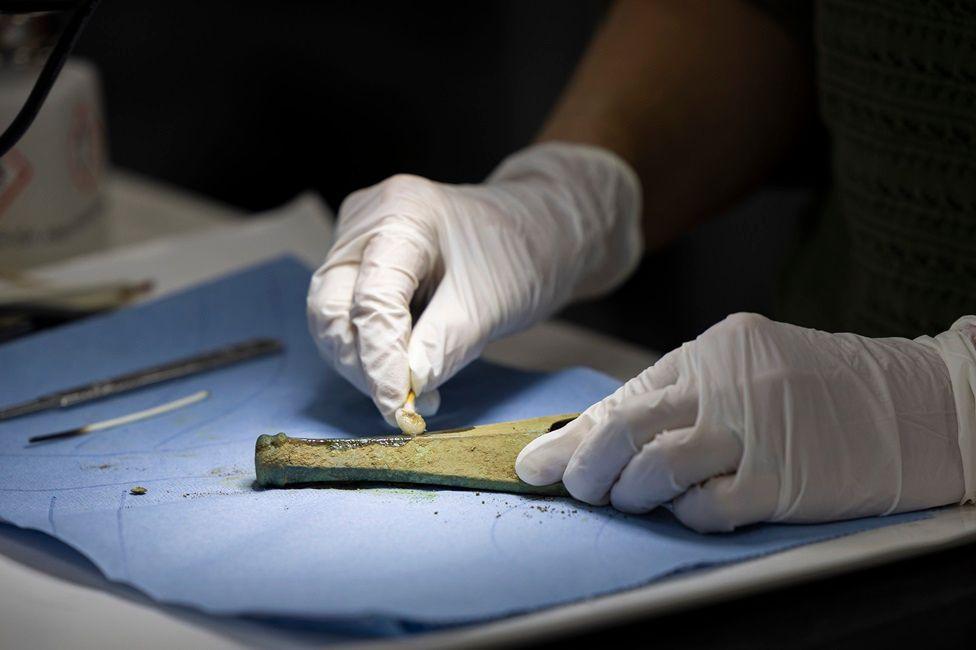
It has been estimated conservation work will take three years to complete
It is estimated that it will take three years to complete the conservation work on the discovery.
Bethan Bryan, conservator at NMS, said: "Working on the conservation of the Peebles Hoard is a rare privilege and definitely a career highpoint.
"As well as removing dirt and corrosion, it is essential that we preserve as much precious organic material as possible for future research.
"Getting to this point has been a challenging and incredibly time-intensive process, but the moment the silvery surface began to emerge was magical, a secret revealed after 3,000 years."
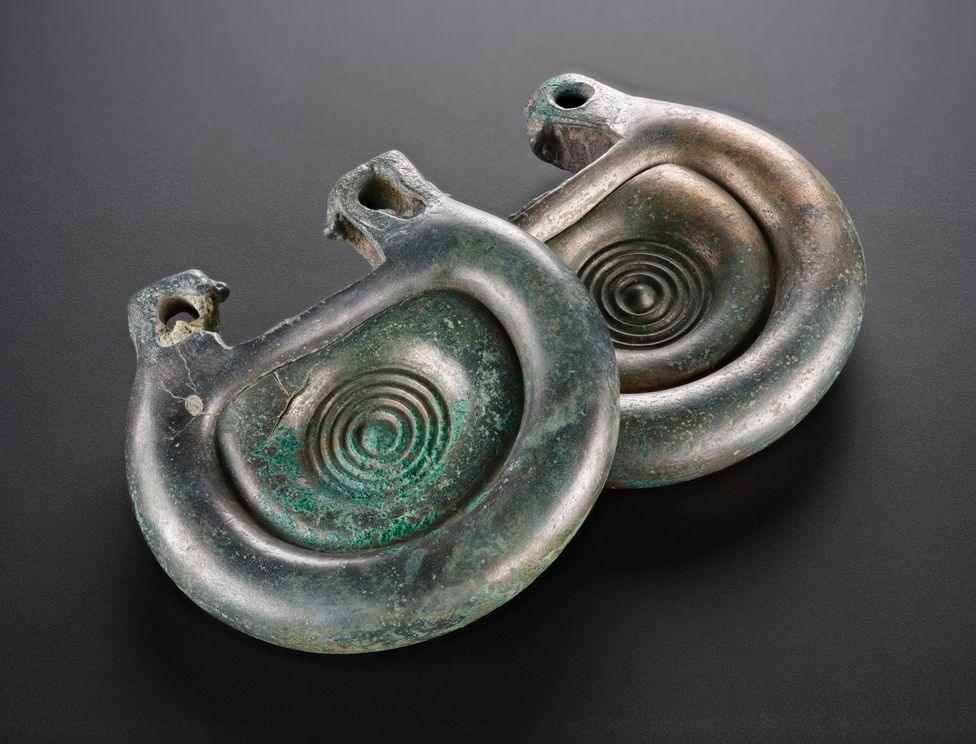
The items are estimated to have lain undisturbed for 3,000 years
The use of many of the objects in the hoard is yet to be discovered but it is believed that some may have adorned a horse or wooden vehicle.
The tin-enriched decoration would have added to its impact, signifying high status and wealth.
Dr Knight added: "Thanks to the generous support of our donors we are making significant progress.
"However, there is more to be done to prevent further deterioration of these fragile objects and continue our research to uncover more of the hoard's secrets."
Conservation of the Peebles Hoard has been supported by The Leche Trust, the Pilgrim Trust and a group of private trusts and individual donors.
- Published10 August 2020

- Published24 October 2024
